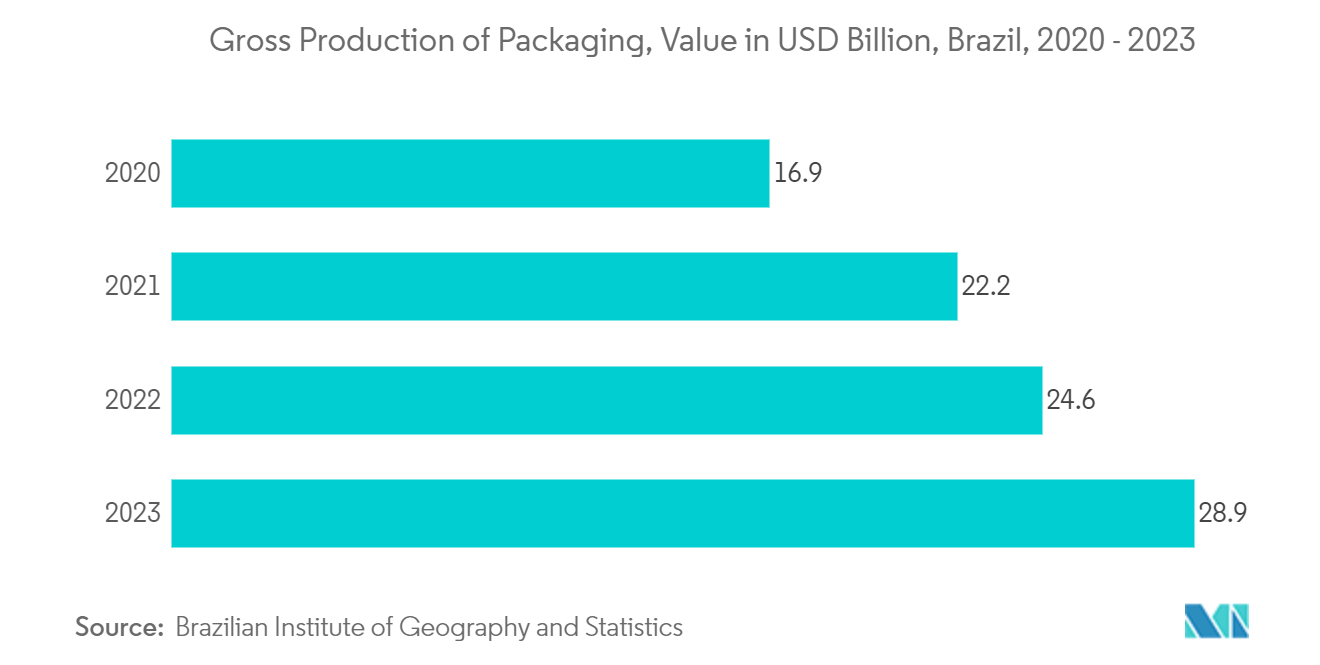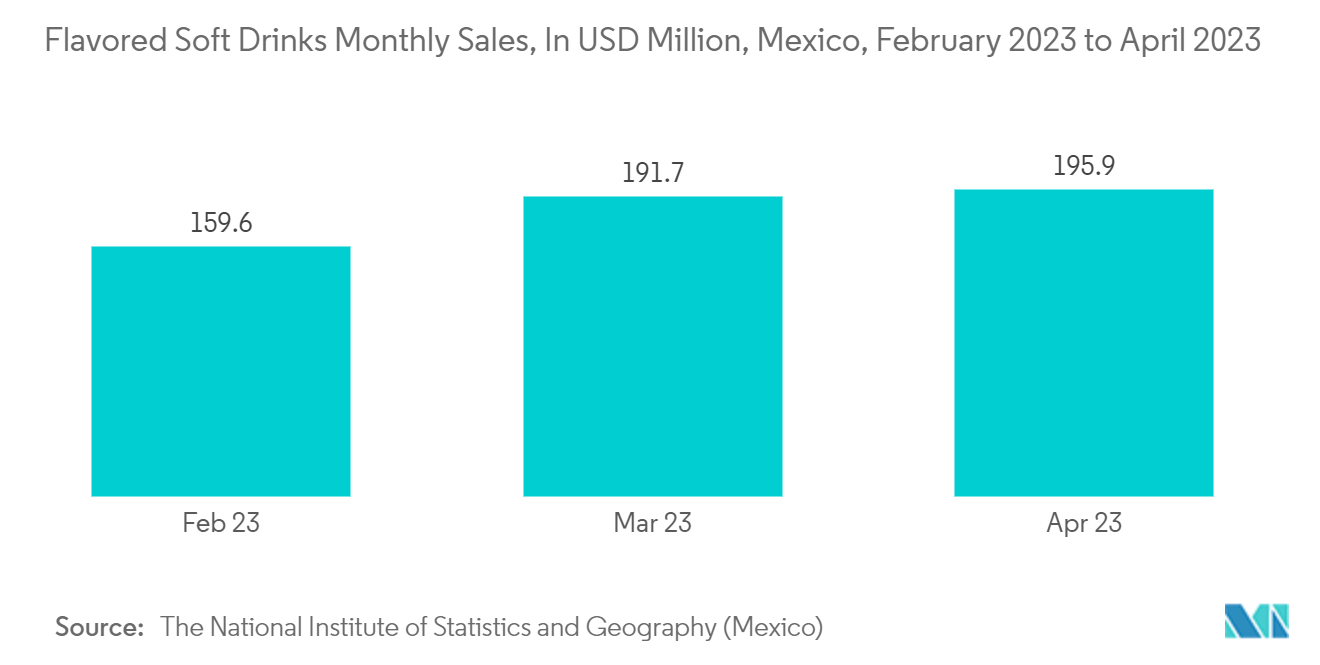Market Trends of Latin America Plastic Bottles Industry
The Polyethylene Terephthalate (PET) Segment to Hold Significant Market Share
- PET has become a crucial packaging material for bottle manufacturers across the country. Lightweight PET resins with high strength, toughness, good abrasion and heat resistance, low creep at elevated temperatures, and good chemical resistance make them ideal for bottle and container production.
- These properties contribute to the durability and versatility of PET packaging, making it suitable for various products, including beverages, food items, and personal care products. PET's recyclability and cost-effectiveness further enhance its appeal to manufacturers, aligning with growing consumer demand for sustainable packaging solutions. As a result, PET continues to dominate the packaging industry, driving innovation and efficiency in bottle and container production.
- The trend toward lightweight products is cost-effective and helps manufacturers gain a competitive advantage in the market. This shift toward lighter packaging materials, particularly plastic bottles, allows companies to reduce production costs and transportation expenses. In 2023, the gross production value of Brazil's packaging industry was estimated at USD 28.9 billion, an increase from USD 22.2 billion in 2021.
- This significant growth of approximately 30% over two years highlights Brazil's expanding packaging solutions market. The rising demand for packaging and the trend toward lightweight products present substantial opportunities for plastic bottle manufacturers in the coming years. As consumers and businesses increasingly prioritize sustainability and cost-efficiency, manufacturers who can provide lightweight, durable plastic bottle solutions are expected to see increased demand for their products.
- Sustainable packaging solutions have gained prominence due to increased consumer awareness of their environmental benefits. This trend has shifted consumer preferences toward products using eco-friendly packaging materials. Companies across industries have responded by investing in research and development of sustainable packaging options. PET has emerged as a critical resin in eco-friendly packaging due to its recyclability and potential for circular use. Its versatility allows for applications in various packaging formats, from bottles to food containers. PET's recyclability reduces plastic waste and conserves resources, aligning with the growing global focus on sustainability and circular economy principles.

Carbonated Soft Drinks Expected to Hold Significant Share in the Market
- PET is the most popular plastic packaging material for soft drinks. PET bottles must be solid to withstand the internal pressure of CO2 without distortion or expansion. Soft drink manufacturers are increasingly choosing plastic containers due to several factors influencing packaging design for carbonated beverages. PET bottles are more energy-efficient than glass bottles in delivering 1,000 gallons of soft drinks and generate less solid waste by weight compared to glass and aluminum containers. Consequently, companies are transitioning to PET formats for carbonated beverages and innovating with recycled materials in response to changing consumer preferences in the country.
- Due to factors such as a hot and humid climate, changing demographics, increasing spending power among the youth, rapid urbanization, and a rise in rural consumption, the demand for carbonated soft drinks in the country is adapting. In April 2023, sales of flavored soft drinks in Mexico exceeded USD 195.9 million, a notable increase from approximately USD 159.6 million in February 2023. This surge underscores the region's growing appetite for soft drinks, subsequently driving the demand for plastic bottle packaging. Packaging for carbonated drinks requires containers that endure pressure without altering the flavor.
- However, there has been a notable shift toward plastic packaging in recent years. This change is primarily attributed to the challenges posed by glass bottles, including their reusability costs for manufacturers and the risk of breakage and damage during transit. Additionally, plastic bottles offer advantages such as lighter weight, lower transportation costs, and greater convenience for consumers, further fueling their adoption in the market. The transition to plastic packaging also aligns with the increasing emphasis on sustainability as manufacturers explore recyclable and eco-friendly plastic options to meet environmental regulations and consumer preferences.
- The globalization of consumers is a critical factor in the soft drinks industry's success. Advancements in technology and transportation have allowed companies to access global markets, creating new growth opportunities. Multinational soft drink brands have leveraged this trend by forming partnerships with regional bottlers and distributors. These collaborations with local market experts enable faster expansion into new territories, altering consumption patterns and plastic bottle demand across regions.


